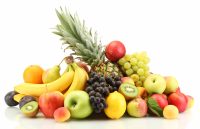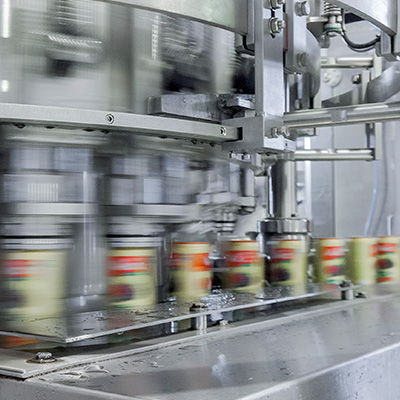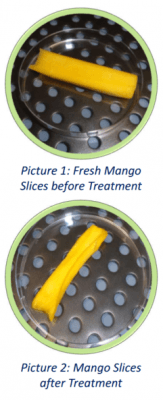Validation of Drying Steps for Fruits
Fruits and vegetables are an essential part of a balanced diet and with consumers demanding healthy, fresh-like and convenient food, dried fruits provide the opportunity to enjoy seasonal produce all year round.
 Drying removes the water from foods so microorganisms cannot grow but low water activity foods are being recognized as products where pathogens can survive and remain viable during storage for weeks or months. Dried foods are often consumed as they are or used as ingredients in ready‐to‐eat items, so there can be issues with microbiological quality and safety.
Drying removes the water from foods so microorganisms cannot grow but low water activity foods are being recognized as products where pathogens can survive and remain viable during storage for weeks or months. Dried foods are often consumed as they are or used as ingredients in ready‐to‐eat items, so there can be issues with microbiological quality and safety.
DRYING AS A PREVENTIVE CONTROL FOR PATHOGENS
For fruits, microbial contaminants are usually introduced during primary production or harvesting, storage, and transportation. Salmonella is the most common concern for these dried products. The risk of foodborne illness is increased by the low infective dose of Salmonella as just a few cells can make people sick.
 There are many different methods of drying including vacuum drying, freeze drying, oven drying, infrared drying and solar drying. Convective air drying is most commonly used in the food industry and this method uses a high temperature and long drying cycle. Drying temperature should be controlled to avoid over-heating and spoilage. Most fruits are dried at about 60 to 70°C until they have the desired final moisture content of 15% for conventionally dried fruits. Product temperature, moisture and residence time are the main parameters to control to manage the process. Fruits suitable for drying include apples, pears, peaches, plums, apricots, bananas, mangos, strawberries, and blueberries.
There are many different methods of drying including vacuum drying, freeze drying, oven drying, infrared drying and solar drying. Convective air drying is most commonly used in the food industry and this method uses a high temperature and long drying cycle. Drying temperature should be controlled to avoid over-heating and spoilage. Most fruits are dried at about 60 to 70°C until they have the desired final moisture content of 15% for conventionally dried fruits. Product temperature, moisture and residence time are the main parameters to control to manage the process. Fruits suitable for drying include apples, pears, peaches, plums, apricots, bananas, mangos, strawberries, and blueberries.
For low-moisture foods, there is a need to identify the microorganisms of concern and most resistant pathogen, the level of inactivation needed, potential impact of food formulation and to validate the process. A 4 to 5 log reduction, or 99.99% to 99.999% reduction, of pathogenic bacteria like Salmonella is a recognized safe target for validation of pasteurization processes on low moisture foods. The use of a Salmonella surrogate to validate the efficacy of your process is vital. Surrogates are harmless microorganisms that mimic resistance of foodborne pathogens. Due to this safety, they are used directly within the factory to simulate contamination and test the efficacy of any process to reduce pathogens. The use of a surrogate is the only way to bring a real-life picture of a kill step efficacy to mitigate pathogens at the desired level.
CASE STUDY: DRIED MANGOS
 Novolyze has capitalized on our experience in validation to formulate a new surrogate product to help manufacturers assess the efficacy of a drying step in fruits and vegetables. This adds one more application for Novolyze’s range of dry, ready-to-use surrogate organisms: SurroNov®. The compatibility of SurroNov® to validate drying steps has been verified for mangos at lab scale by Novolyze.
Novolyze has capitalized on our experience in validation to formulate a new surrogate product to help manufacturers assess the efficacy of a drying step in fruits and vegetables. This adds one more application for Novolyze’s range of dry, ready-to-use surrogate organisms: SurroNov®. The compatibility of SurroNov® to validate drying steps has been verified for mangos at lab scale by Novolyze.
Mangos were cut into slices of 10-gram each and independently inoculated with Salmonella serotypes typhimurium, montevideo, mbandaka and senftenberg; three strains of Listeria monocytogenes and SurroNov®. Mango slices were stored at room temperature for 15 to 30 minutes and then put in individual thermal sheaths allowing moisture transfer. A ventilated oven simulated drying conditions and a temperature of 60°C/140°F was used before mangos were left to dry for 16 hours. SurroNov® showed a higher resistance to drying than both pathogen cocktails confirming it is an appropriate surrogate for Salmonella and Listeria in the tested conditions.
The findings support the use of SurroNov® to evaluate the microbial lethality of drying systems in fruits and vegetables. Novolyze is able to coordinate various types of projects related with the safety of drying systems in fruits and vegetables including:
- The evaluation of novel drying systems, where tests using SurroNov® can be conducted at pilot scale
- The optimization of the drying parameters, with a view to reach the best preservation of the organoleptic/nutritional quality of foods, while maintaining food safety
- The validation of an operating dryer under real, industrial conditions – and the confirmation of the performance of the CCP/Preventive Control parameter
- The implementation of periodic verification programs using SurroNov® as a routine indicator for the dryer performance
To learn more about how Novolyze can assist with the safety of a drying step, contact us here.
References:
